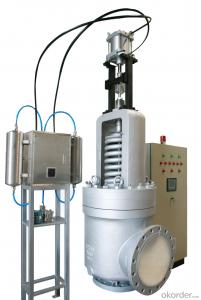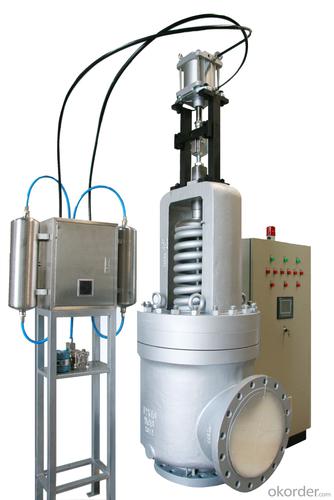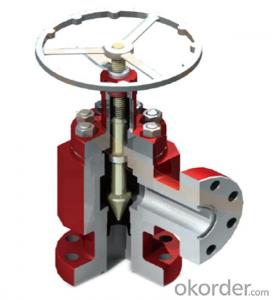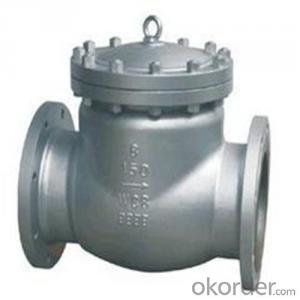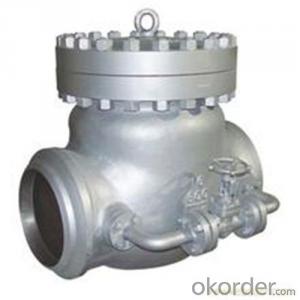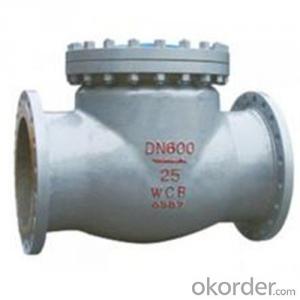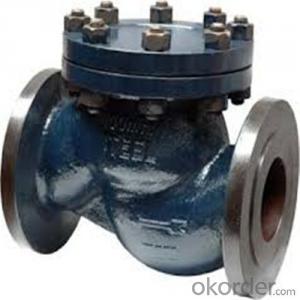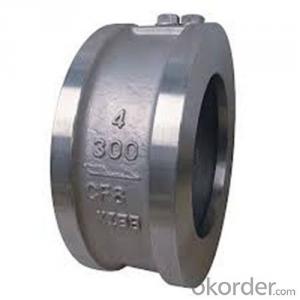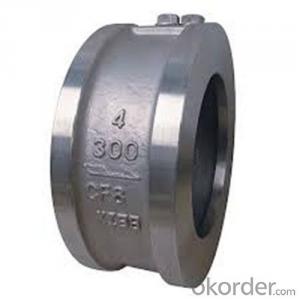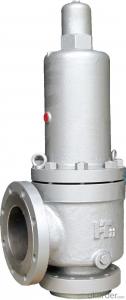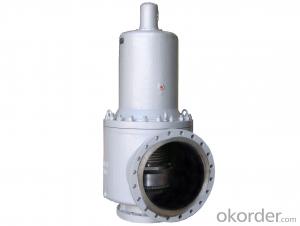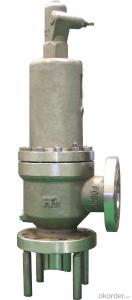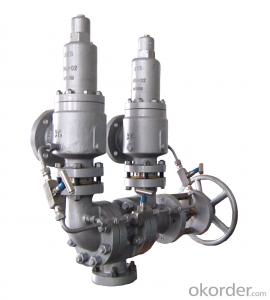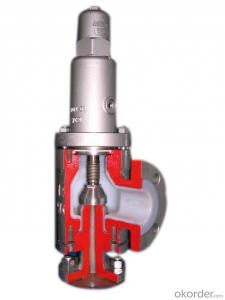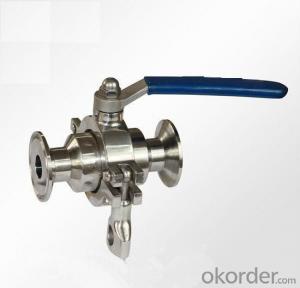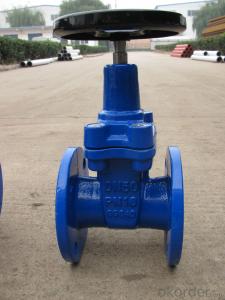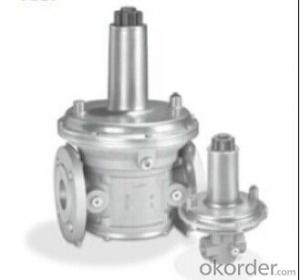High Performance CF8M/WCB Pressure Relief Valve
- Loading Port:
- China Main Port
- Payment Terms:
- TT OR LC
- Min Order Qty:
- -
- Supply Capability:
- -
OKorder Service Pledge
OKorder Financial Service
You Might Also Like
Application:
A pressure relief valve (PRV) is a safety device that relieves overpressure in a vessel or system. When the pressure of vessel or system increased beyond the specified design pressure or maximum allowable working pressure, PRV will be opened automaticly to relief the overpressure for proteding the vessel or system. The PRV will be closed if the pressure reached specified design pressure so that to ensure the normal operation and protect the vessel or system.
Our Pressure Relief Valve has been designed and manuractured according to following Standard:
♦ ISO 4123-1 Safety Devices for Portection Against Excessve Pressure
♦ API STD 526 Flanged Steel Pressure Relief Valves
♦ API STD 527 Seat Tightness of Pressure Relief Valves
♦ ASME Boiler and Pressure Vessel Code Section VIII Division 1, Rules for Construction of Pressure Vessels
Peformance:
♦ Type: Conventional, Bellows
♦ Size:1" D 2"- 8" T 10"
♦ Class:150lb~2500lb
♦ Temperature:-268~+538°C
♦ Fluid: Gas, Steam, and Liquid
♦ Material: Carbon steel, Stainless steel, Alloy steel
♦ The allowable tolerance of the set pressure: ≤±3%
♦ Overpressure: ≤10%(gas)/≤20%(liquid)
♦ Blowdown: ≤10%(gas)/≤20%(liquid)
♦ Tightness: conforms to API STD 527
Features:
♦The solid nozzle is screwed into the body, which makes the maintenance easy.
♦ The shape of the disc holder has been designed to enhance the effect of the fluid thrust for an instant lift of the disc.
♦ Blowdown control is provided with adjustable nuzzle ring only.
♦ The adequate terials and clearance between disc holder and guide , spindle and adjusting screw assures disc to lift successfully.
♦ The surface of both the disc and the nozzle seat are deposited with Stellite. Excellent flatness and surface finish of the seating surfaces by precision machining and lapping assure pressure relief valve to have high degree of seat tightness and long using life.
♦ The bellows of balanced bellows pressure relief valves can not only avoid and effect of variable back pressure in the system , but also protect spring and other trim components from corrosive media.
♦ Materials are chosen carefully , and the manufacture of the spring and the bellows has strict technological process. Each of them is tested and checked strictly.
- Q: Serious answers only please. I have a 1995 Ford F-250 XL 5.8L 351 c.i. engine. My check engine light comes on periodically when I drive. When I bought the truck a year ago the gas mileage wasn't too bad, about 9-10 mpg. I've only put about 3,000 miles on it this past year, and now the needle drops just driving it across town. I work at a Chevy dealership, and I've worked at another Chevy dealer as well as a Ford. I've always done my own work on my cars and am currently restoring a 1967 Mustang, so I have decent knowledge under the hood. I scanned the truck and it has a stored code for EGR valve voltage too high (stuck open). How bad could this be hurting my gas mileage? It's $160 for the valve and sensor even after my discount, and being a college student that's a lotta $ to pay. I'm selling the truck and need it running perfect when I do. Please, serious answers only, and help is greatly appreciated!
- Open the hood, find the valve and check its operation. With the engine running, watch the diaphragm and then operate the throttle. When you gun the engine, you should see the diaphragm move. If it doesn't, there may be a dried-out and damaged rubber vacuum hose (quite likely) or else the valve is clogged up with carbon. Pull the valve out and shoot it full of carburetor cleaner to dissolve out the carbon. You should be able to move the operating diaphragm by sucking on the vacuum tube. While you're in there, start the engine without the EGR valve in place and shoot carburetor cleaner into the holes that lead into the intake manifold: one should have vacuum, and the other should have exhaust pressure.
- Q: I recently had an echo and they said their was a slight tricuspid valve leak but it was 19 and anything less than 20 is considered normal. I have no clue what that means. Does any one have and clue on what scale she was talking about. Also she stated that the machine are so sensitive these days that the majority of people are found to have some sort of leak. Is this the case??????
- The tricuspid valve is a valve in your heart that, like any other valve, makes the blood flow in only one direction. When your heart pumps blood into your body, this valve is normally closed so the heart only pumps it in your arteries, and not back in your veins whence it came. When this valve doesn't close shut completely, a little quantity of blood leaks through the little opening there. You can see this with an echocardiography which you said you had done. Yes, the value of 19 is really low, and the fact that the limit to normality is 20, so you're close to it, doesn't mean that you're almost sick. Keep in mind that these limits that doctors have are some guidelines, and they all have a safe zone. Plus, this is not the kind of lesion that evolves, it doesn't mean that as the years go by the little space in your valve will get bigger and bigger - nothing of that sort. It is probably a thing that you had since forever, and you will have it the same your whole life with no problems at all. In the end, let me say that if you are brave enough to go to a doctor (many people aren't, and that really sucks), you should be brave enough to ask him/her what they mean when they say certain stuff, without worrying that your question might be stupid or already answered. You didn't go to med school, and it is the doctor's duty to explain to you what is happening in your body just as it is to diagnose and treat you. Best of luck!
- Q: I have a 2006 saturn vue that has a valve tap in the engine. The car has about 100k miles on it now. I'm the original owner of the car, and I've had the problem with the valve tap since about 50k miles, and even when taking it to saturn dealerships, I was told it was nothing and the car was fine. Now that I know what it is (I took it to another mechanic that was a friend who went over it with a 'fine tooth comb') I ahve done research and know what can go wrong a little too late :(So my question: My car only makes the tapping sound for about 5 or so minutes when i turn the car on, then it goes away and you can't hear it anymore, is this usual for a valve tap?
- you sure if its valves or lifters? valves will cause a lot more problems than just a tap. lifters on the other hand will cause a noise but usually no major damage if its just a tap. lifters in a modern engine are pressurized with engine oil to fill the clearance between the lifters and the camshaft to ensure proper valve opening. if the lifter has a clogged oil port then no or little oil can enter the lifter, causing a gap between the lifter and camshaft. even a small gap will cause a noticeable noise, especially when the oil is cold and thick at start up. its a saturn so its most likely an overhead cam setup, try a high quality oil treatment and a little thicker oil. if it keeps happening then listen to the lower half of the engine. if its louder down there then you have more problems than valves.
- Q: I have a 78 honda hawkii 400 or cb400TII and I need to know what the valve gaping needs to be set to
- Don't be so cheap. Get a service manual for this bike. A CLymer manual for this bike costs a measly $36.95 + shipping. With a service manual you will no longer need to depend on strangers on the Internet for your maintenance procedures. With a service manual you will no longer need to decide if these maintenance procedures from the strangers on the Internet is accurate or just a bunch of B.S. I find it amazing how much B.S. someone will give for a measly 2 points. A service manual will have detailed step by step instructions on how to perform any maintenance task on this bike including setting the valves. A service manual will pay for itself the first time you use it. Or, if you insist on getting your maintenance procedure from a stranger on the Internet. Start taking stuff off of the engine. Continue to take stuff off of the engine until you find the valves Adjust them tight enough so they don't make too much noise but not so tight that they won't close Start putting stuff back on the engine Continue putting stuff back on the engine until you run out of stuff You are done 92 Years Certified Professional Motorcycle Mechanic.
- Q: I have a 03 civic ex with 96k how important is it that I do a valve adjustment. The engine runs smooth.
- intake is .007-.009in exhaust .009-.011in good luck
- Q: i wanna know the role of TOP ENTRY in this definition it's difference with side entry valve.
- Top Entry Ball Valve
- Q: im looking for the egr valve on a 97 mazda 626 its not in top of engine like other cars where can it be?????o and its a 4 cylinder
- okay your gonna look at your intake manifold. Then locate where your air intake connects to the throttle body. Look around the throttle body and you should see the egr valve it will be hidden by your air intake but if you look hard enough you'll find it and also if you see in vacuum lines running around there, they will point you in the right direction because your egr valve has two vacuum lines that run to it. hopefully that helps.
- Q: my check engine light tells me that i need an egr valve, if i install one will that cut the light off????
- Possibly. If you don't go out then you need to have someone hook up a code reader and clear the SES light.
- Q: So the plug in the bathroom since fell in, coming off the attachment to open and close it from the top. When I got under the sink, I turned the shut off valves all the way to the right and the water stoped working. I unscrewed the attachment and fixed the plug (on the drain no the water) and when I turned the vlaves back on, no water. It dribbles just a little ifi turn the sink all the way on, however I cant get full water pressure. Any help?
- If you turned the shut off valves too tight you may have cut the rubber gasket which now partially plugs the opening of the flow line. You'll have to shut off the water to the house and take apart the valve and replace the rubber gasket.
- Q: 1998 camaro3.8L v6sometimes when i start the car, it makes this loud ticking noise that goes with the RPMIm pretty sure its the valve, anyone know how to fix it, and how much it might cost?
- HI what you are hearing is not a valve but a lifter... MAYBE... Here's a couple of things that well make it tick. 1) an exhaust manifold gasket leak well sound like a ticking lifter. ( if the noise goes away after the car warms up it might be this gasket.) 2) a bent push rod well make a lifter tick ( as the tolerances would be off) 3) a bad lifter well make a ticking sound. If it is indeed a lifter then best leave it to a pro.. As the intake would have to come off to replace ALL the lifters (you can't buy just one). If its a push rod just the valve covers well have to come off.. to isolate the sound you can use a long piece of hose 3 ft. or so. hold one end to your ear and move the other around the motor compartment and see if you can tell if the sound is coming from inside the motor (lifter), inside the valve cover (push rod) or outside the motor exhaust gasket. good luck tim
Send your message to us
High Performance CF8M/WCB Pressure Relief Valve
- Loading Port:
- China Main Port
- Payment Terms:
- TT OR LC
- Min Order Qty:
- -
- Supply Capability:
- -
OKorder Service Pledge
OKorder Financial Service
Similar products
Hot products
Hot Searches
Related keywords
